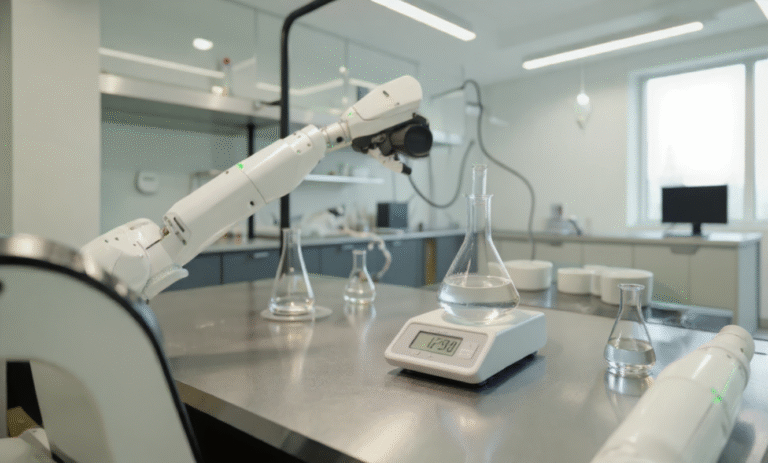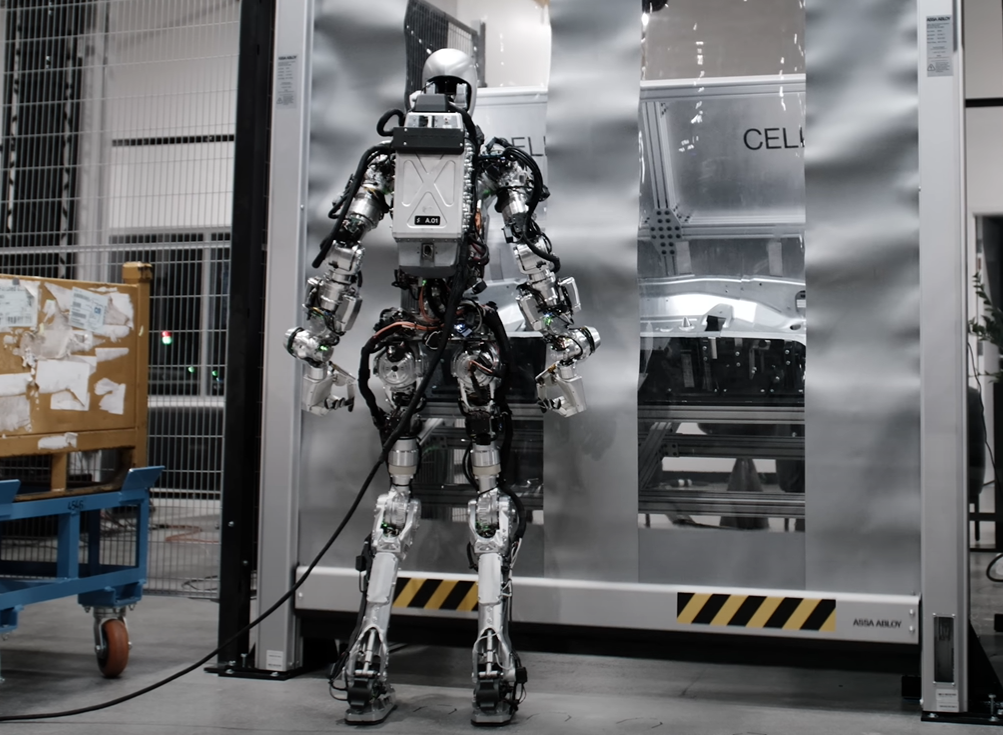Which approach is better in robotics: the blockbuster “hero robot” or the quietly modular platform?
- Hero-robot path. Invest resources into one eye-catching humanoid, chase viral videos, then retrofit the machine for paying for work.
- Platform-first path. Start with simpler bodies (arms, wheeled bases) prove them in revenue-earning roles, gather safety data, and let every product upgrade the next.
In the quietly modular platform approach, all the machines (from factory arms to a household assistant and a full humanoid) share identical actuators, sensors and edge computers. Each plugs into an “app-store” ecosystem where skills migrate laterally across the fleet⁵. Every new form factor is therefore both a commercial SKU (Stock Keeping Unit) and a roaming data probe, tightening the feedback loop that turns hardware iterations into cognitive gains.
One code base, many bodies
The developer environment abstracts motion, perception and safety into timed micro-services, allowing updates written for one robot to propagate across the line-up. Customers that start with a six-axis arm can later add a mobile logistics unit or humanoid without rewriting the whole code.
A stair-step product ladder then data flywheel meets market flywheel.
In a recent interview, David Reger, CEO of Neura Robotics, outlined how the company is pursuing a platform-first strategy:
- Phase 1 – Industrial arms & AGVs. Thousands already deployed stream multimodal data for AI training.
- Phase 2 – Household/service assistant. Pre-orders opened May 2025 at €9,999², broadening data collection to domestic spaces.
- Phase 3 – Humanoid platform. Unveiled June 2025⁴, capable of lifting 100 kg⁶, yet built from the same joint modules proven in earlier phases.
Shared hardware helps the amortization of tooling and design costs, simplifies the compactness, cost and reusability of components and shared software slashes integration time.
Factory robots supply high-fidelity torque, force and vision logs that refine grasping and navigation models. When the wheeled assistant rolls into homes, it adds cluttered environments and conversational audio. Simultaneously, white-label agreements (apparently involving “four of the top ten robot manufacturers” reselling the firm’s arm platforms under their own brands) have expanded the installed base without diluting the original brand identity.
Redundant torque sensing and vision-based human detection, proven first on static arms, migrate to mobile bases and finally to bipedal fall-mitigation. Regulators gain cumulative operating hours; clients gain confidence that every new chassis obeys familiar safety logic.
Strategic Implications
The platform-first ladder turns each product into both a cash generator and an R&D engine. Revenue from factory arms and the €9,999 assistant underwrites further AI work; the humanoid debuts only after perception, manipulation and safety stacks are field-tested.
Two open questions define the success:
- Will pre-orders convert into high-volume deliveries?
- Will outside developers embrace the app-store model fast enough to create a virtuous cycle of new skills?
If the answers trend positive, the modular strategy could outlast flashier one-shot rivals and reshape how the industry thinks about scaling toward general-purpose robots.
Sources
1 | Founded 2019 | |
2 | Household assistant price €9,999 | |
3 | Series B €120 m (Jan 2025) | |
4 | 3rd-gen humanoid launched Jun 2025 | |
5 | App-store-style ecosystem (“Neuraverse”) | |
6 | Humanoid lifts 100 kg | (Forbes) |
7 | “Thousands of units in the field” | Interview statement |
8 | “Four of top ten OEMs resell the arm platform” | Interview statement |



